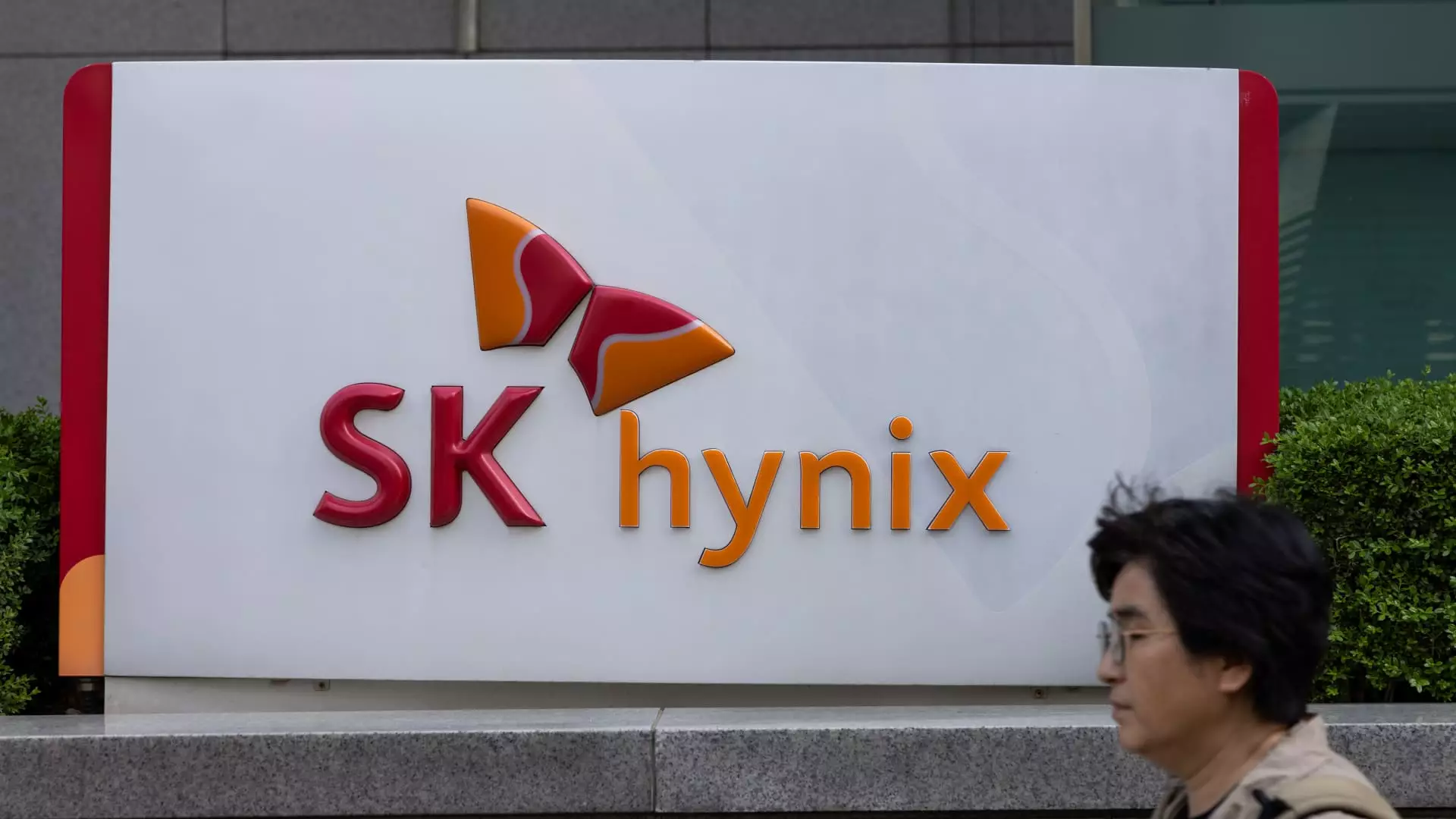In a remarkable demonstration of resilience and strategic positioning, South Korea’s SK Hynix, a juggernaut in the global memory chip sector, reported outstanding financial results for the fourth quarter. The financials, released on a Thursday, showcased a substantial upswing in both revenue and operating profit, bolstered primarily by the growing demand for high-bandwidth memory (HBM) utilized in generative AI applications. As the world leans increasingly toward AI-driven solutions, SK Hynix has found itself at the forefront of this technological revolution.
The fourth-quarter earnings report revealed a revenue of 19.77 trillion won (approximately $13.7 billion), marginally below the LSEG SmartEstimate of 19.91 trillion won. However, the operating profit of 8.08 trillion won ($5.6 billion) exceeded expectations slightly, surpassing the estimate of 8.02 trillion won. Notably, the operating profit represented a remarkable 15% increase from the previous quarter, highlighting the company’s ability to adapt and thrive amidst fluctuating market conditions. Revenue also saw a robust increase of 12%, pointing to a broader trend of rising consumption of memory chips as businesses and consumers alike adopt more AI technologies.
SK Hynix’s impressive financial performance can be directly attributed to the escalating demand for AI memory, particularly from high-performance computing environments. The company has established itself as a vital supplier to leading players in the tech field, including the U.S. chip designer Nvidia. This strong alignment with key market players has not only enhanced SK Hynix’s market position but has also allowed it to leverage its world-leading HBM technology to optimize profitability during a critical period for the sector.
At the core of SK Hynix’s success is its advanced high-bandwidth memory technology. HBM represents an evolution in dynamic random access memory (DRAM), characterized by vertically stacked chips, which enables more efficient space utilization and power consumption. This technology caters to high-demand applications, particularly in gaming and AI, where speed and efficiency are paramount. Competitors like Micron Technology and Samsung Electronics also play pivotal roles in the HBM market, underscoring the competitive nature of the industry.
The fourth quarter does not only mark an isolated success but concludes a year where SK Hynix achieved its highest annual revenue ever, surpassing the previous record set in 2022 by over 21 trillion won. Furthermore, the operating profit for the year eclipsed previous peaks seen during the semiconductor boom of 2018, emphasizing the vibrancy of SK Hynix’s business model and its adeptness in navigating market dynamics. As the landscape of technology evolves, the reliance on memory solutions is anticipated to grow, positioning SK Hynix favorably for future growth aligned with advancements in artificial intelligence and beyond.
SK Hynix’s recent financial achievements underscore not only the company’s strategic foresight but also the significant role of high-bandwidth memory in the rapidly transforming tech landscape. With continued demand for AI-driven solutions, the prospects for SK Hynix seem promising as it navigates the complexities of an ever-evolving market.

